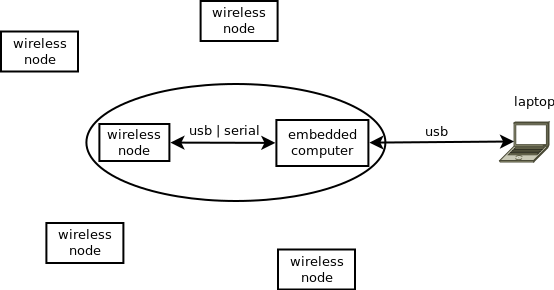Design Overview
The basic setup for the system consists of a base station and wireless nodes to which the wireless nodes can connect. The base station connects to a user’s laptop and is interfaced via a website hosted on the base station.

Wireless node
- to hook up sensors to
- to hook up actuators to
- sends and receives RF (wireless) data
- possible to hook up USB for wired data
Base station
- consisting of an embedded computer (e.g. BeagleBone, Raspberri Pi, PiZero)
- includes a wireless node to talk to the other nodes
- runs the software that talks to the firmware on the wireless node
- connects to user’s computer via USB and shows up as an IP interface
- has a web interface for configuring the functionality of the wireless nodes in the network
- has a web interface to make custom firmware for wireless nodes
- has browsable documentation that corresponds to the version of software that is installed on it
Motivation
The receiving node and the wireless node are interchangeable. Running the communication software on the embedded system has a number of advantages:
- it is easier to setup for the user: no need to install custom software on your own laptop
- it is easier to maintain: we can develop software that works on Linux, within a controlled environment. We do not need to maintain 3 different operating systems with all their different flavours
